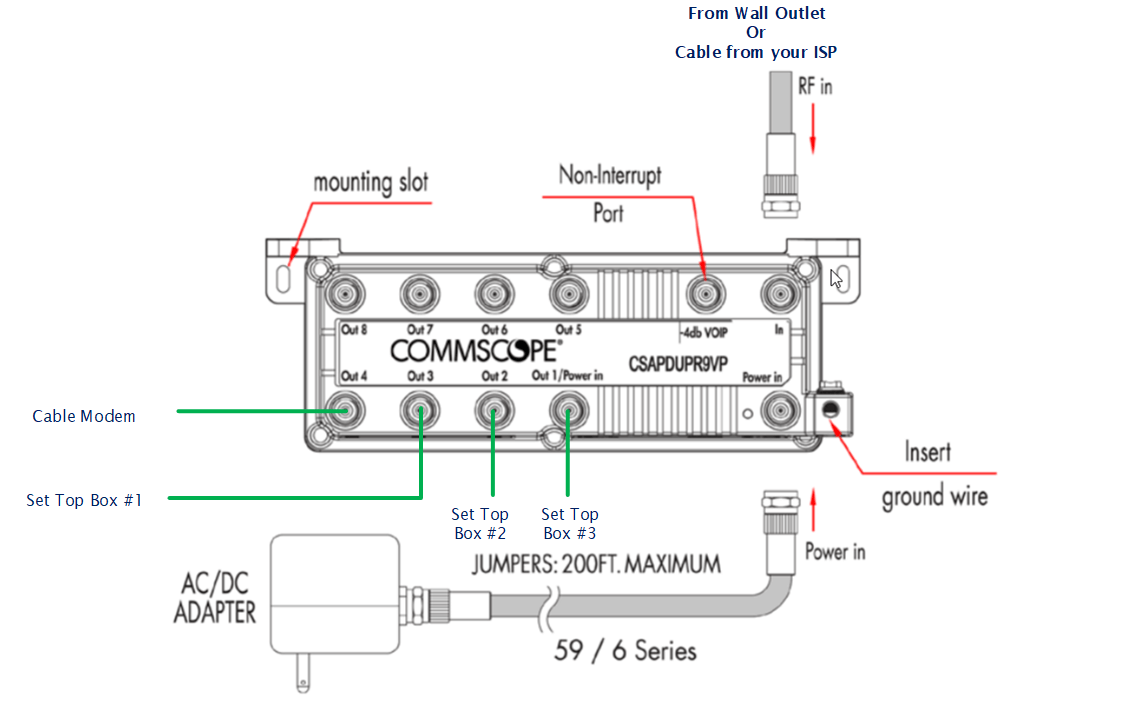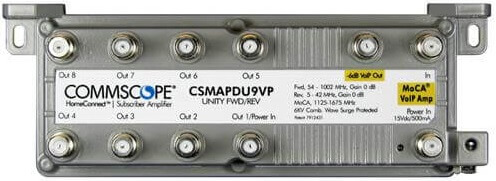Why do you need correct signal level on your modem?
Signal levels on your home Cable Modem need to be at an optimal level for Cable modem to operate correctly. Otherwise, you might end up with lower speed/throughput, occasional or repeated disconnections, video buffering, higher latency, etc
Common DOCSIS 3.0/3.1 signal issues in home
- Too many splitters in the house
- Multiple Video Set top boxes for different rooms
- Multiple TVs in the house directly connected to the ISP cable signal
- Large house with multiple cable connection points
What are optimum signal levels for my modem?
Downstream (Rx) Signal Levels:
This is the amount of signal received by the modem from your ISP. For all modems DOCSIS 3.0 / 3.1:
- -7 dBmV to +7 dBmV are "Recommended" values.
- -8 dBmV to -10 dBmV / +8 dBmV to +10 dBmV are "Acceptable" values but out of spec from ISP. A technician should still fix this to get to recommended levels.
- -11 dBmV to -15 dBmV / +11 dBmV to +15 dBmV are "Maximum" values but out of spec from ISP. A technician should still fix this to get to recommended levels. It is strongly recommended for you to force ISP tech to fix it since your power levels are close to edge.
- Lower than -15 dBmV & Higher than +15 dBmV are out of DOCSIS 3.0 specifications and modems may not work at all or cause lot of problems
SNR (signal to noise ratio) levels:
This is how clear the signal is at the modem receiver (downstream SNR) .
DOCSIS specifications list minimum CNR (carrier to noise ratio) levels not SNR levels. The SNR levels listed here are based on commonly recommended MER levels for digital cable signals.
- 256 QAM: 30 dB minimum. 33 dB or higher is recommended. Most ISPs run 256-QAM in downstream.
- 64 QAM: 24 dB minimum. 27 dB or higher recommended. Some ISPs have 64-QAM in downstream but rare
- 16 QAM: 18 dB minimum. 21 dB or higher recommended. It is very rare for ISP to use 16-QAM on newer DOCSIS 3.0 networks.
- QPSK: 12 dB minimum. 15 dB or higher recommended. It is very rare for ISP to use QPSK as performance on this modulation is very low.
Upstream (Tx) Transmit Power level:
This is the amount of signal transmitted by the modem to reach the receiver in the cable company head-end. This is a problem in most homes and most common cause of internet disconnects.
These are generic recommended power levels
*Recommended Upstream signal levels are +35 dBmV to +49 dBmV (DOCSIS 3.1)
*Recommended Upstream signal levels are +35 dBmV to +49 dBmV (DOCSIS 3.0)
However, Upstream power levels depend on number of upstream bonded channels and type of upstream modulation (64-QAM, 16-QAM, etc). Most ISPs use either 3 or 4 bonded channels and are mostly 64-QAM.
| Number of Bonded US channels | 1 | 2 | 3 | 4 |
| DOCSIS 3.0 Specification for 64-QAM channel | 57 dBmV | 54 dBmV | 51 dBmV | 51 dBmV |
| Recommended Value for good operations | 35-49 dBmV | 35-49 dBmV | 35-49 dBmV | 35-49 dBmV |
How to amplify the signal levels in your home using powered amplifier?
You will need to use power amplifier splitter instead of regular 4 or 8 port splitter. These splitters have almost no signal loss and helps you to split upto 8 times for different devices such as Cable Modems, TVs, Set top boxes, etc in your home without losing any signal quality. There are 2 common models used common and here we have compared them below and also provided a connection diagram on how to install it in your home. Typical installation takes 5-10 minutes.


